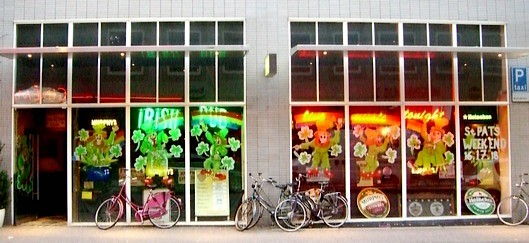Lunatech blog retrospective - 2008

Lunatech followed on from the 2007 developer events with bigger events in 2008. Meanwhile, we started learning new ways to write about and teach technology in a variety of technical blog posts by different people.

Events
Benelux JBoss User Group, 29 February 2008 was the best developer user group event ever, because we got a location with truly excellent facilities. As well as the main presentation screen there were additional television screens to view the slides, and refreshments were served continually during the presentations. The event was at Paddy Murphy’s Irish pub’s sports bar, which, as the photos of the event show, was pretty busy.
Lunatech Golf Invitational 2008 was the first business event for a while, at the Rottebergen golf club in Rotterdam, with competition, prizes and drinks afterwards. Not only was it great weather but, as Michael wrote, `Most importantly we enjoyed a lovely day while others were forced to work'.
Meeting-avoidance for self-managing developers - Devoxx 2008 published the slides of the presentation at Devoxx, which had to be renamed from JavaPolis after Sun’s lawyers reportedly claimed trademark infringement. Incidentally, the story goes that the conference organisers abandoned the Javoxx name to avoid yet another round of negotiations. Aside from JavaPolis/Javoxx/Devoxx/whatever remaining a cool conference, this presentation marks the start of agile software development being something to talk about in itself.
Technical writing
Bean validation in Java EE was the first serious technical article of the year - Stéphane Épardaud’s long and serious explanation of Java EE solutions to hard validation problems. The value of this kind of article is that it takes this much detail and explanation to understand this kind of Java EE topic.
XML and Namespaces by Bart Schuller is something different: a short explanation of something that is frequently misunderstood, despite not being that hard to understand. Compared to many technologies, XML standards are not so hard to understand, but they do still require some thought and clear thinking about core concepts, such as what a URI is.
Introduction to ZTemplates is different again. In this article Mattias van der Vlies, who was an intern at Lunatech, wrote a brief introduction to a new web framework, so you can see a few code examples to get a feel for what the framework is like, and to make an initial assessment of its pros and cons. This is the kind of `five-minute introduction' that you really want to see in every framework’s own documentation. However, just because it’s worth having doesn’t mean that writing it is as easy as it looks, which is why it’s a good exercise for anyone with some spare time. Spending a day trying something out and writing up the conclusions is time well spent, especially if Google says you’re first. (For what it’s worth, as of June 2014, this article is still the first Google search result for `ztemplates introduction'.)
Getting a list of time zones in Java and Seam is another kind of framework documentation - a tutorial, rather than an introduction. The catch with flexible frameworks, such as JBoss Seam 2.0 in this case, is that even though the manual might describe a general case like `writing your own Seam component', there are usually plenty of ways to get stuck when you actually try to do it yourself. What’s harder than it looks in this case is actually showing all of the steps, with code, without leaving anything out and ending up with a readable result.
Software development
The programmer’s private office is obviously shameless bragging (a.k.a. marketing) about how working at Lunatech could mean having a private office with a door, in the same way that My new PC is a Mac was about the new Mac Pro under the desk, replacing the Linux desktop that everyone else had. In 2008 (at least) the only thing better than not using Windows on the desktop was not using Linux either. Ironically, the year of Linux of the desktop might have actually arrived since then, but we wouldn’t know because now we all have a MacBook Pro.
Perhaps these aren’t particularly interesting (or annoyingly smug) blog posts, but I would certainly like to read more and see more pictures of where and how other people work, and why. For example, The Price of (Dev) Happiness at Fog Creek in New York might be more irritating but anything else, but it should also be thought-provoking and possibly even discussion-provoking. In practice, you usually have to actually visit companies to discover this kind of thing.
